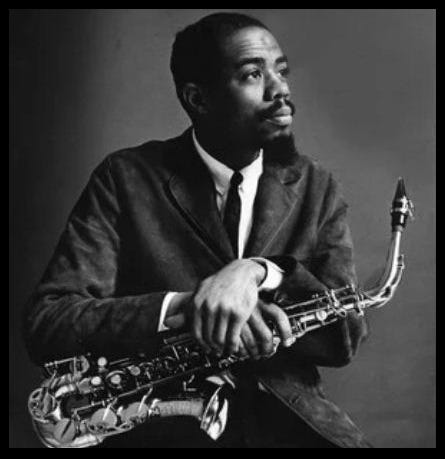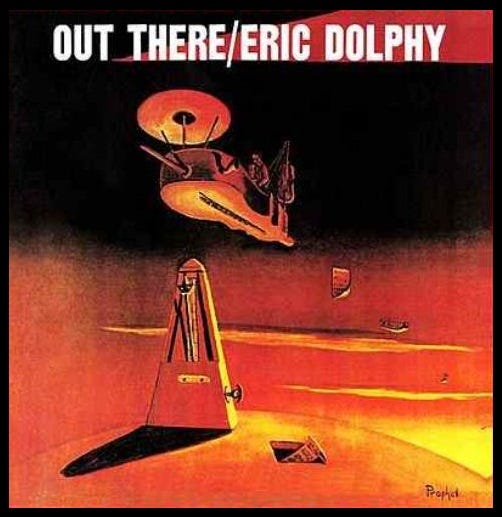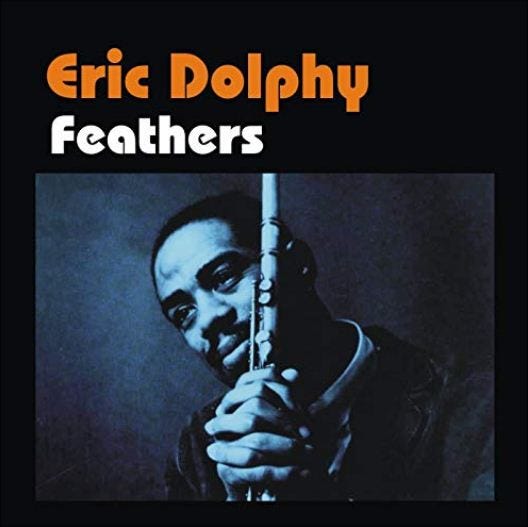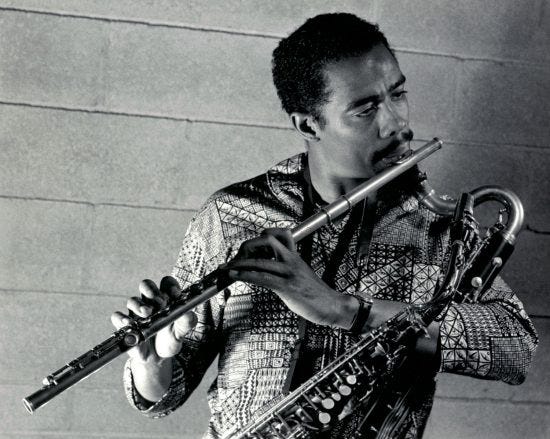Eric Dolphy (June 20, 1928 – June 29, 1964) – Feathers (1961)
Featuring Ron Carter on cello, the exquisite closing cut off Dolphy's immortal second solo album Out There remains one of the high points of human civilization.
Watch full video on Twitter.
View most updated version of this post on Substack.
Jazz legend Eric Dolphy was a multi-instrumentalist genius whose far out sounds are still unequaled.
Born and raised in Los Angeles to Panamanian-born parents, he was six years old when he began taking music lessons and learned to play the clarinet and saxophone. In junior high he studied the oboe, and in high school learned other instruments and became co-director of the Youth Choir at the Westminster Presbyterian Church. After graduating in 1947, he went to Los Angeles City College, and started performing and recording alongside trumpeter Art Farmer in a big band led by drummer Roy Porter, called the 17 Beboppers.
Dolphy served in the U.S. Army and attended the Navy School of Music, a member of one of the first class of Army musicians to receive training there. After being discharged in 1953, he moved back to Los Angeles, where his father had built him a backyard studio. This led to many jam sessions with musicians including Gerald Wilson and Clifford Brown.
In 1958 he was invited to join Chico Hamilton’s quintet, and played with them for the next two years. He played flute with the band at the Newport Jazz Festival in 1958, as documented in the film Jazz on a Summer's Day. He left the quintet in 1959 and moved to New York City. There he joined Charles Mingus' Jazz Workshop in 1960, later becoming an official member of his band and recording two albums with Mingus.
Dolphy released his debut album Outward Bound in 1960, closely followed by Caribé (1961) which he recorded with the Latin Jazz Quintet. In the early sixties he was also playing and recording with John Coltrane. See our post from April on Coltrane circa 1962 for more on their collaborations.
The exquisite closing cut “Feathers” off his immortal second solo album Out There (1961) remains one of the high points of human civilization. It was written by Hale Smith, with Dolphy on alto sax, Ron Carter on cello, Roy Haynes on drums, and George Duvivier playing double bass.
“Feathers” transports all who hear it into a mournful yet defiantly hopeful space-time dimension, a state of mind suggested by the interplanetary jazz world depicted in Richard Jennings’ surrealistic painting on the cover of Out There.
The album was recorded on August 15, 1960 but not released until September, 1961. It featured classic tracks from start to finish, including the laid back “Sketch Of Melba” and the upbeat jam “17 West,” both with Dolphy on flute. Out There was one of the legendary bassist Carter’s earliest recording dates, and a rare session with him playing cello, not bass.
The composer who wrote “Feathers” was Hale Smith, who along with his wife Juanita was close friends with Dolphy. He had been introduced to them by guitarist Jim Hall, a college friend of Hale’s who played alongside Dolphy in the Chico Hamilton Quintet. Dolphy often visited the Smiths at their Freeport, Long Island home. “He’d come out to our house in his Volkswagen and spend the day,” said Juanita in a 2019 JazzTimes interview. “He just wanted to be with a family; he was an only child who didn’t really know many people in New York.”
While in the army during World War II, Hale had been in Earl Hines’ band. He also sat in with Dizzy Gillespie and Chico Hamilton. Hale and Dolphy spent many hours together playing, listening to, and taking about music. Hale Smith was “one of the greatest arrangers of African-American spirituals,” according to flutist and UCLA music professor James Newton. “He wrote charts for Ahmad Jamal, Dizzy Gillespie, and people like that. He brought classical and jazz together in a way that fascinated Eric.” Newton co-produced Dolphy’s posthumously released Musical Prophet: The Expanded 1963 New York Studio Sessions (2018), based on tapes Dolphy left with the Smiths.
Dolphy played three primary instruments - the bass clarinet, flute, and alto sax, and he demonstrated his mastery of them all on Out There. It was a groundbreaking album that lived up to its title, and an important step in Dolphy’s artistic development, which was halted prematurely by his tragic death at age 36 at a hospital in Berlin on June 29, 1964. “If we extend the exponential growth that occurred between 1961 and 1964,” speculated Newton, “he would have been beyond our imagination by 1970.”
Further info:
“Eric Dolphy: It’s All Out There Now: Rediscovered 1963 recordings by the saxophonist deepen the legacy of a jazz visionary,” by Geoffrey Himes, JazzTimes, January 25, 2019.
#jazz #JohnColtrane #RonCarter #EricDolphy








